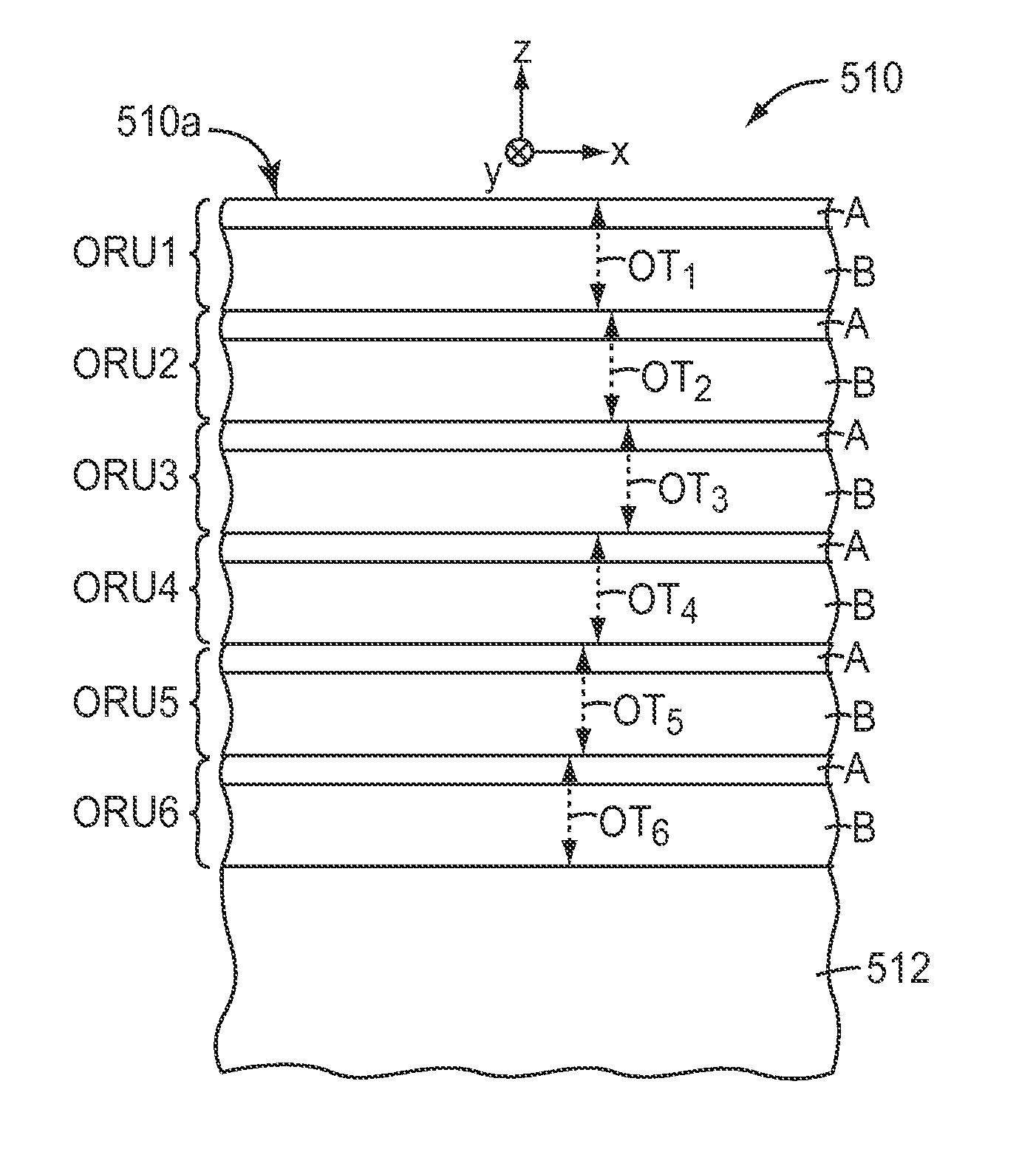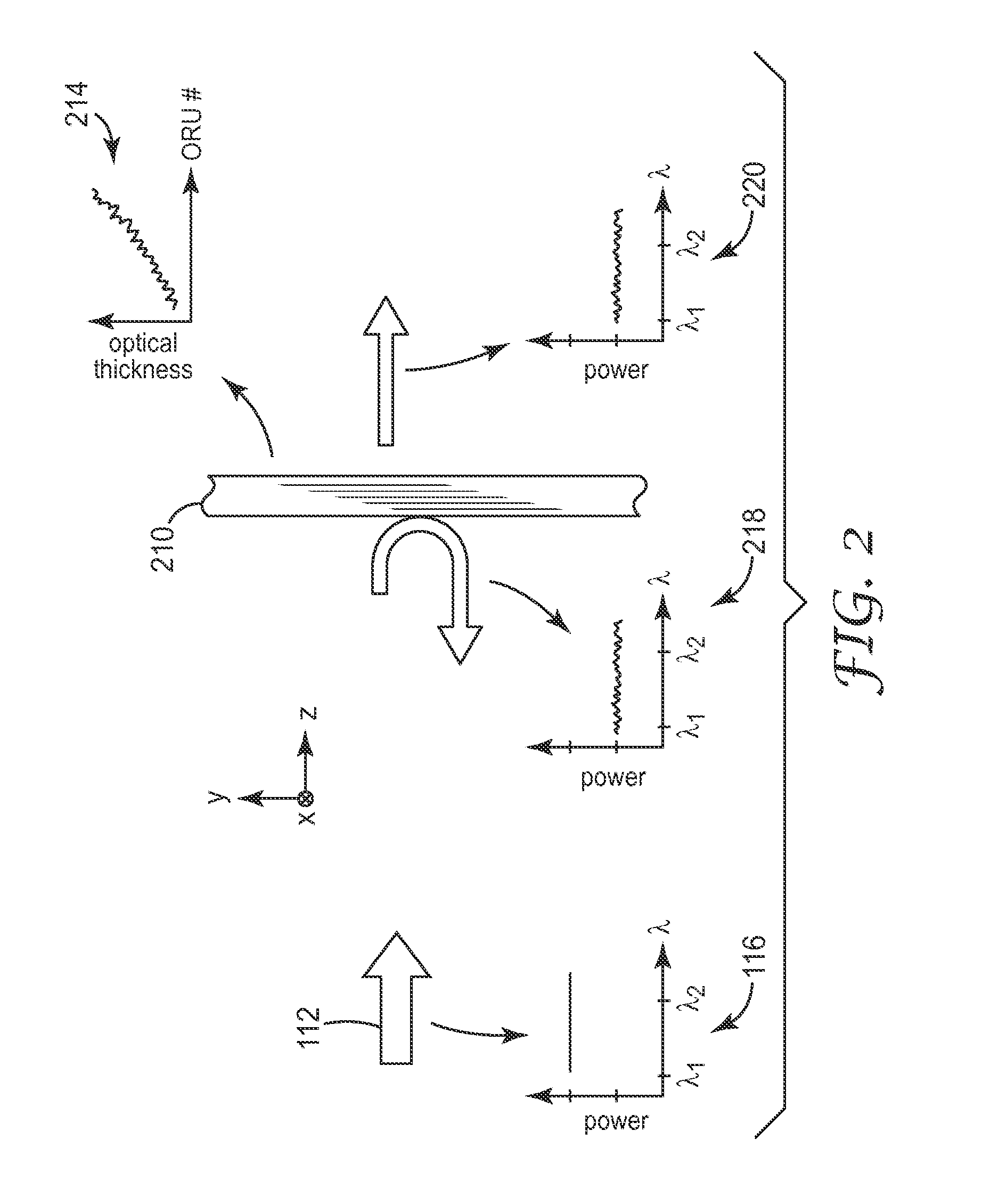Partially reflecting multilayer optical films with reduced color
a multi-layer optical film and color reduction technology, applied in the field of optical films, can solve the problems of undesired perceived color, imperfect layer thickness control, design and manufacture of polymeric multi-layer optical films, etc., and achieve the effect of high frequency variability and high frequency variability
- Summary
- Abstract
- Description
- Claims
- Application Information
AI Technical Summary
Benefits of technology
Problems solved by technology
Method used
Image
Examples
Embodiment Construction
[0039]As mentioned above, one challenge faced by designers and manufacturers of polymeric multilayer optical films that are intended to be both (1) partially reflecting along a principal axis at normal and oblique angles and (2) broadband (i.e., intended to provide partial reflectivity over a broad wavelength range) is unintended and undesired color resulting from imperfect layer thickness control. Such undesired color is typically manifested as relatively high frequency variability in the optical transmission and reflection spectra, the high frequency variability being directly associated with deviations in the thicknesses of the microlayers (stated more accurately, deviations in the optical thicknesses of optical repeat units of microlayers) from their ideal or target values. This challenge facing manufacturers and designers of partially reflecting broadband multilayer optical films will now be explained with reference to FIGS. 1-3. For purposes of these figures, for simplicity, t...
PUM
| Property | Measurement | Unit |
|---|---|---|
| wavelength range | aaaaa | aaaaa |
| wavelength range | aaaaa | aaaaa |
| wavelength | aaaaa | aaaaa |
Abstract
Description
Claims
Application Information
 Login to View More
Login to View More - R&D
- Intellectual Property
- Life Sciences
- Materials
- Tech Scout
- Unparalleled Data Quality
- Higher Quality Content
- 60% Fewer Hallucinations
Browse by: Latest US Patents, China's latest patents, Technical Efficacy Thesaurus, Application Domain, Technology Topic, Popular Technical Reports.
© 2025 PatSnap. All rights reserved.Legal|Privacy policy|Modern Slavery Act Transparency Statement|Sitemap|About US| Contact US: help@patsnap.com



